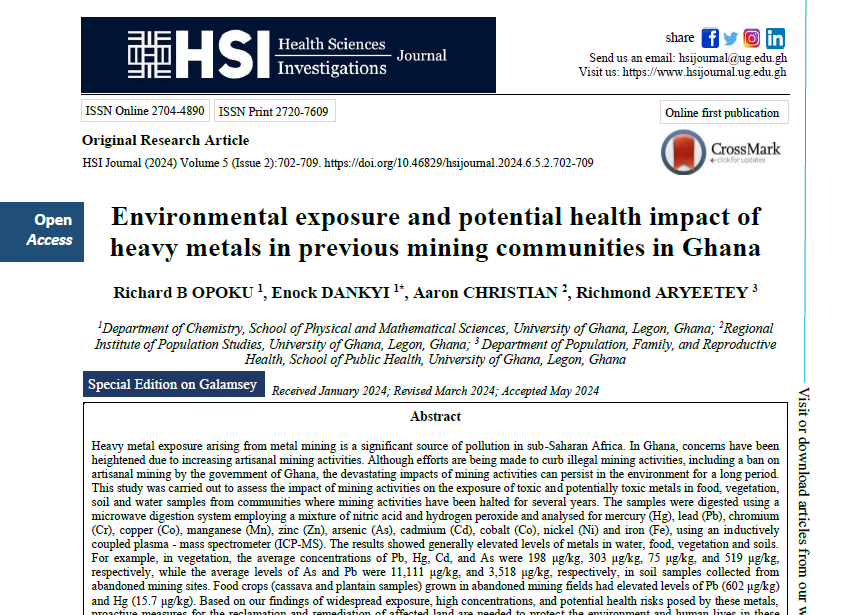Environmental exposure and potential health impact of heavy metals in previous mining communities in Ghana
Abstract
Heavy metal exposure arising from metal mining is a significant source of pollution in sub-Saharan Africa. In Ghana, concerns have been heightened due to the increasing artisanal mining activities. To address the effects of illegal mining, the government of Ghana instituted a ban on artisanal mining. However, the devastating impacts of these activities can persist in the environment for a long period of time. In this study, we present the results of exposure to toxic and potentially toxic metals in food, vegetation, soil, and water samples from communities where mining activities have been halted for several years. The samples were digested using a microwave digestion system employing a mixture of nitric acid and hydrogen peroxide and analysed for mercury (Hg), lead (Pb), chromium (Cr), copper (Co), manganese (Mn), zinc (Zn), arsenic (As), cadmium (Cd), cobalt (Co), nickel (Ni) and iron (Fe), using an inductively coupled plasma - mass spectrometer (ICP-MS). The results showed generally elevated levels of metals in water, food, vegetation, and soils. For instance, in vegetation, the average concentrations of Pb, Hg, Cd and As were 198 μg/kg, 303 μg/kg, 75 μg/kg, and 519 μg/kg, respectively while average levels of As and Pb were 11,111 μg/kg, and 3,518 μg/kg, respectively, in soil samples collected from abandoned mining sites. Food crops (cassava and plantain samples) grown in abandoned mining fields had high levels of Pb (602 μg/kg), and Hg (15.7 μg/kg). Based on our findings of widespread exposure, high concentrations, and potential health risks posed by these metals, proactive measures for the reclamation and remediation of affected land is needed to protect the environment and human lives in these previous mining communities.


